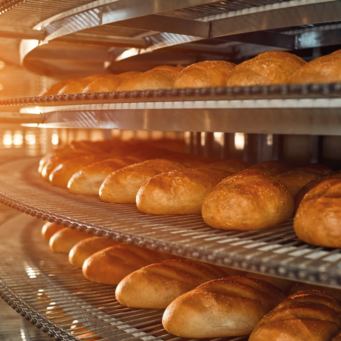
Qu'est-ce qu'une pression d'huile insuffisante et comment y remédier ?
L'huile moteur veille à ce que toutes les pièces mobiles du moteur soient lubrifiées et protégées. Lorsque l'huile s'écoule par les orifices du moteur, une pression s'établit. Cette pression permet à l'huile d'atteindre toutes les pièces et tous les coins du moteur. Si cela ne se produit pas, comme dans le cas d'une faible pression d'huile, les pièces métalliques risquent d'entrer en contact les unes avec les autres, ce qui entraîne des frottements et une détérioration. Dans le pire des cas, l'ensemble du moteur peut tomber en panne et doit être remplacé. C'est pourquoi il est très important que votre moteur ait une pression d'huile adéquate.
What are low oil pressure causes?
Obstructed Oil Filter: After the oil leaves the oil pump, it passes through the oil filter. This filter prevents debris and other contaminants from passing through the engine and keeps it clean. This filter naturally creates a resistance in the oil flow but is not disruptive. As the build-up of debris grows, the restriction of the oil flow will increase. This could result in a completely blocked oil filter through which no oil can pass. To prevent a blockage, the pressure relief valve will open. This valve opens automatically when the pressure exceeds a preset value. The oil will then bypass the oil filter so it can keep on flowing. This detour reduces the pressure to that of the bypass valve.
Low Oil Level: When the oil level is low, the oil pump can draw up air from the sump. This can cause the oil to become aerated and turn into foam. Foaming can lead to excessive oxidation and reduces the lubricating properties of the oil. With an insufficient amount of oil, the oil pump will not be able to generate enough pressure. This low oil pressure could also be fluctuating during high-speed turns. During these turns, the oil will move to the side of the sump, away from the oil pump.
Dirty Oil Pump: The oil pump takes the oil from the bottom of the oil pan and circulates the oil under pressure to the bearings, pistons and camshaft of the engine. If there is dirt in the pickup, a filter will prevent this from going into the oil pump. If the filter is full with debris, it may have to be cleaned before enough oil can pass through it. There could also be excessive clearances inside the oil pump. This will reduce the ability to pump efficiently and reduces therefore the flow and pressure. This can happen because the oil pump is the only component within the engine that is lubricated with unfiltered oil due to the fact that the oil filter is situated after the oil pump. If there seems to be no problem with the oil pickup filter, it could be that your oil pump is damaged.
Worn Engine Bearings: Oil pressure is not created by the oil pump itself but through the flow and resistance that flow produces. This resistance is accumulated by the openings in the engine through which the oil flows and through the amount of clearance there is between the bearings and crankshaft journals. Especially in a high mileage engine, these bearings will wear down causing the amount of clearance to increase. Due to this increased clearance, the flow will increase and therefore decrease the pressure. These increased bearing clearances will also be noticed by an increase in engine noise and pounding. If there are increased clearances in other places in the engine, this could also lead to reduced oil pressure.
Weak or leaky oil pressure relief valve: The pressure relief valve helps regulating oil pressure and protects your engine from getting damaged by high oil pressure. Normally, the valve opens automatically when it exceeds a preset value. If debris gets stuck, it could be that the valve is held open. This will reduce the oil pressure.
- Oil Viscosity: A low viscosity oil flows more easily through the engine than a high viscosity oil. This is because a low viscosity oil generates less resistance which results in low oil pressure. Temperatures impact the viscosity of the oil. If you are using a mono-grade oil it is important to choose the grade depending on the temperatures outside. That means that if you are using high viscosity oil in summer, you can better switch to a lower viscosity in winter to avoid an oil that is too thick to flow easily. The same applies when you are using a low viscosity oil in winter, you can better switch to a higher viscosity oil in the summer so that more resistance is generated. If you are using a multi-grade oil, your oil will be suitable for all seasons and doesn’t require a change depending on the temperatures. For choosing the right type of grade, always follow the manufacturer’s advice.






















